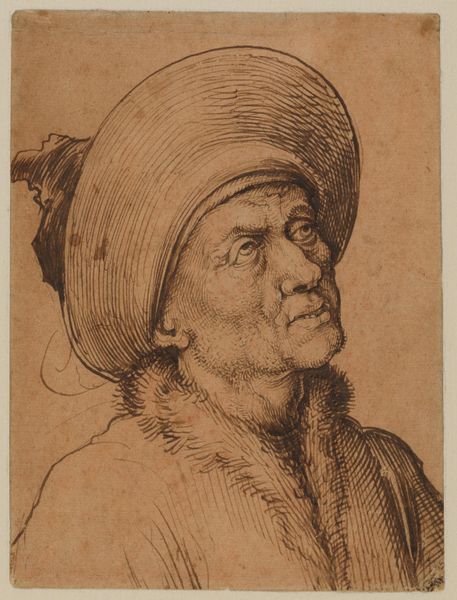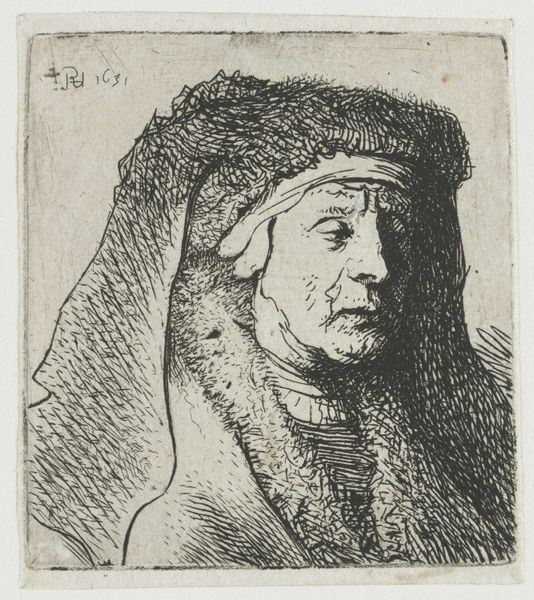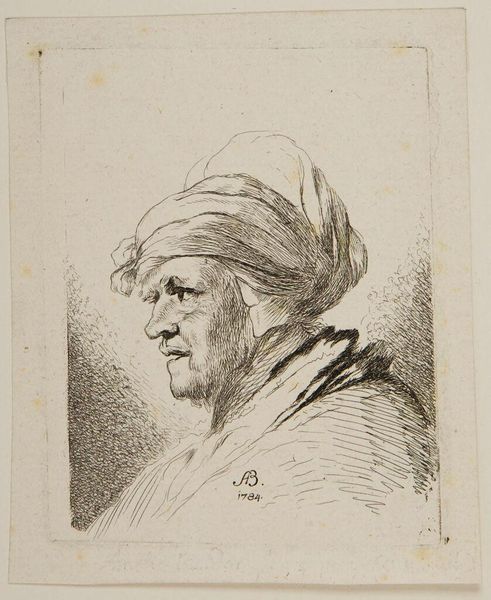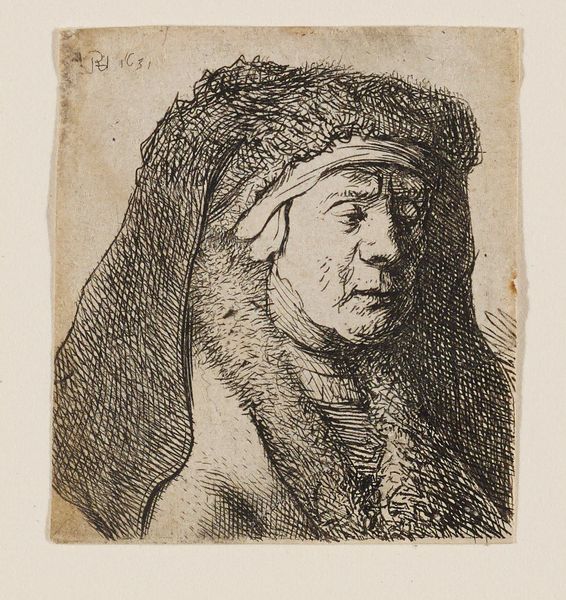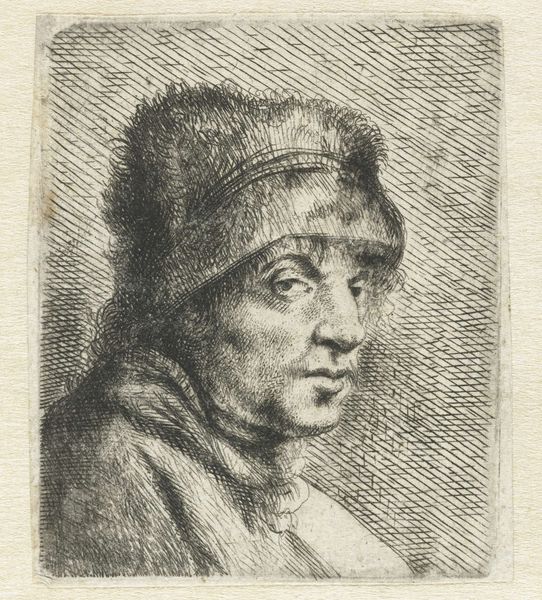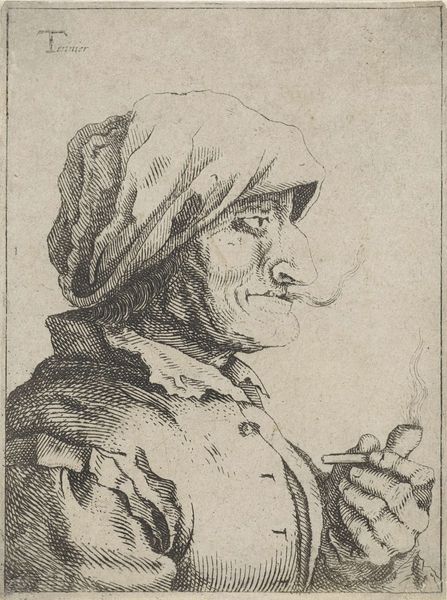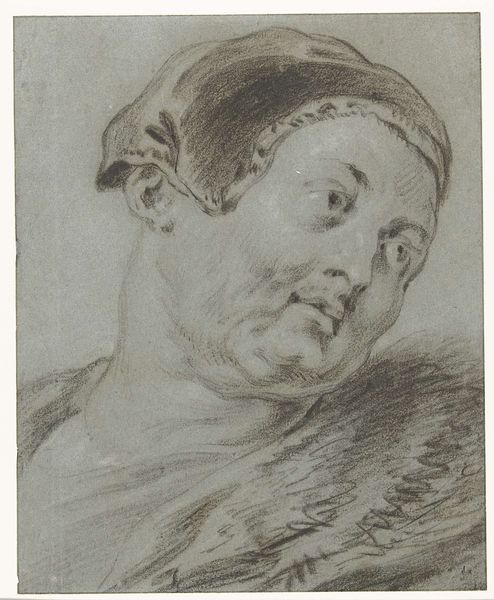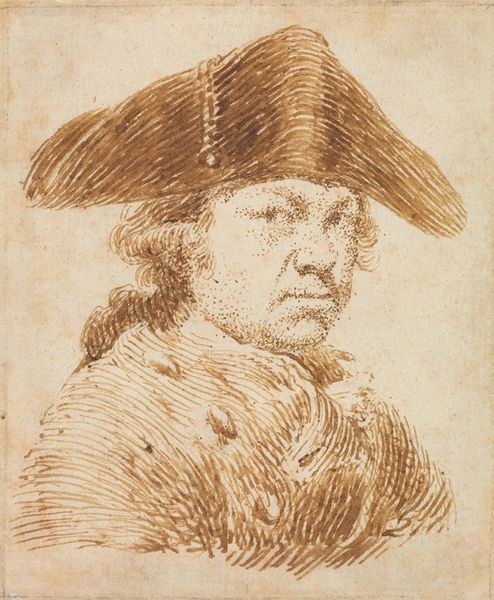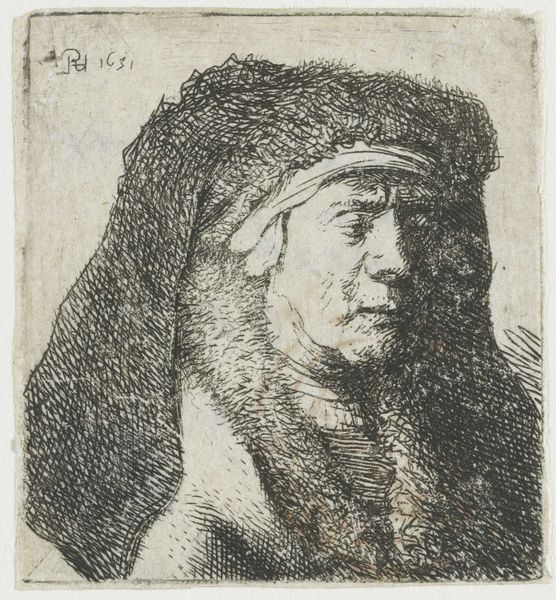
print, etching, engraving
#
portrait
#
baroque
# print
#
etching
#
figuration
#
pencil drawing
#
line
#
engraving
Dimensions: height 88 mm, width 53 mm
Copyright: Rijks Museum: Open Domain
Curator: The sheer density of line creates an overwhelming tactile impression—it's a captivating portrait. Editor: Indeed. We are looking at an etching by Pieter Fransz. de Grebber entitled, "Portret van een man met een tulband, en profil naar rechts", placing its creation somewhere between 1610 and 1655. It's quite a find. Curator: That turban, it speaks volumes. In those days, such headwear signified status, wealth, and cultural connection to the Ottoman Empire, often a symbol of worldly experience, almost like wearing one's travels. Editor: A visible marker of one's engagement with the world, undoubtedly. But how might viewers at the time have understood that imagery? The turban’s meaning wasn't static, but morphed within the context of Dutch mercantile power and burgeoning global awareness. Curator: I suspect the image projects an exoticized power. The Baroque era reveled in drama, and this man’s intense gaze, even in profile, carries a distinct weight, amplified by the starkness of the etched lines, each scratch feeling deliberate, forceful. Editor: The use of etching here also invites us to reflect on the techniques used to democratize the artwork; by utilizing printing, it made such art available to a broader public—changing how the wealthy would promote both themselves and others who interested them, either for power or public consumption. Curator: It definitely brings up the question of access. By translating someone into a series of intentional markings, is he being claimed or examined as “the other"? Is this then cultural tourism on paper? Editor: Perhaps. And perhaps the portrait is not an exact record of a specific person but a study of ‘types,’ and reflects the artistic concerns of de Grebber himself—to show his own command over the genre? Either way, we can say the turban, and everything it once stood for, now acts as a marker in art history, and reflects an exchange between very different value systems. Curator: A very layered exchange, yes, one still charged with ambiguity. Thank you. Editor: My pleasure, I’m happy we could unearth a bit more behind the surface.
Comments
No comments
Be the first to comment and join the conversation on the ultimate creative platform.
